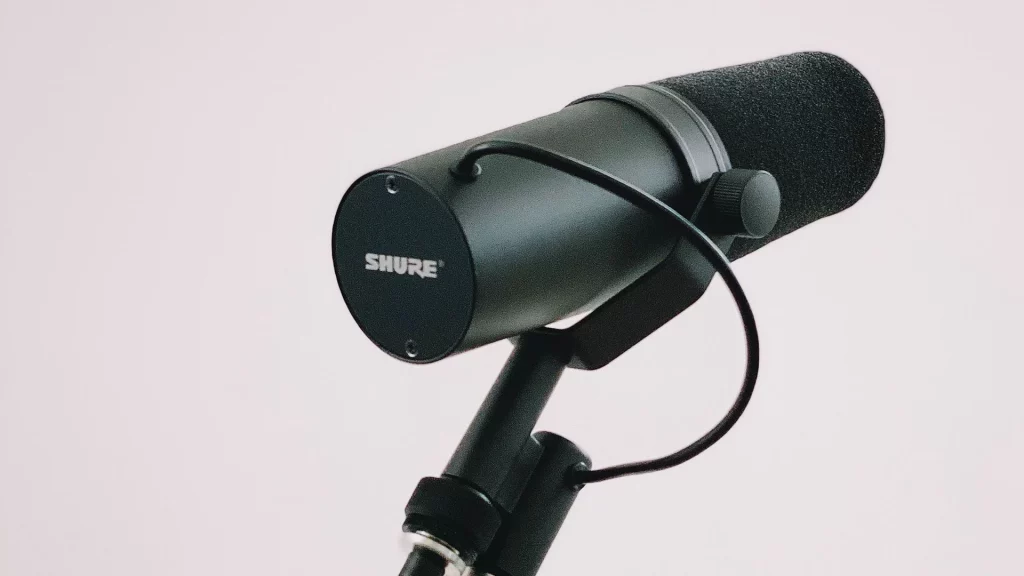1. Understanding the Importance of Audio Quality
1.1 The Impact of Audio on the Viewer Experience
The audio quality of your YouTube videos directly influences how engaging and immersive your content is to the audience. Crisp and clear audio ensures that your message comes across effectively, while poor audio can lead to viewer frustration and disinterest.
1.2 The Role of Microphones in Content Creation
Microphones are essential tools for capturing high-fidelity sound. They come in various types, each designed for specific recording purposes. Understanding the different microphone options available will help you make an informed decision.
2. Types of Microphones Suitable for YouTube Content Creation
2.1 USB Microphones
USB microphones are beginner-friendly and convenient options for YouTubers. They plug directly into your computer, eliminating the need for complex audio interfaces. They are ideal for vlogging, voiceovers, and podcasting.
2.2 Condenser Microphones
Condenser microphones are known for their sensitivity and excellent audio capture capabilities. They work best in controlled recording environments and are commonly used by musicians and ASMR creators.
2.3 Shotgun Microphones
Shotgun microphones are highly directional and excel at capturing sound from a specific direction while reducing background noise. They are popular among videographers and those recording outdoors.
2.4 Lavalier Microphones
Lavalier microphones are compact and clip onto your clothing, providing hands-free recording. They are commonly used in interviews, tutorials, and presentations.
2.5 Dynamic Microphones
Dynamic microphones are robust and versatile, making them suitable for recording musical instruments, live performances, and dynamic vocal recordings.
3. Key Factors to Consider When Choosing a YouTube Mic
3.1 Audio Quality and Sensitivity
Crystal-clear audio with minimal background noise is crucial for a professional YouTube presence. Look for microphones with high sensitivity ratings and low self-noise levels.
3.2 Polar Pattern
The polar pattern determines the microphone’s sensitivity to sound from different directions. Choose a pattern that suits your recording environment and minimizes unwanted noise.
3.3 Connectivity and Compatibility
Consider your setup and choose between USB, XLR, or wireless microphones based on your equipment and recording needs.
3.4 Portability and Durability
If you’re a travel vlogger or frequently record on the go, opt for a microphone that is lightweight, compact, and durable.
3.5 Budget Considerations
Microphones range in price from budget-friendly options to high-end professional models. Set a budget and find a microphone that offers the best value for your needs.
4. Top 5 YouTube Microphones for Content Creators
4.1 Blue Yeti USB Microphone
The Blue Yeti is a popular choice for YouTubers due to its excellent sound quality and versatility.
4.2 Audio-Technica AT2020 Cardioid Condenser Microphone
This condenser microphone is a favorite among musicians and podcasters for its clear and natural sound.
4.3 Rode VideoMic Pro Shotgun Microphone
Ideal for vloggers and videographers, this shotgun microphone captures exceptional on-the-go audio.
4.4 Rode SmartLav+ Lavalier Microphone
The Rode SmartLav+ is perfect for interviews and presentations, ensuring professional-grade sound.
4.5 Shure SM7B Dynamic Microphone
A top choice for studio-quality recordings, the Shure SM7B is a go-to microphone for many professional YouTubers.
5. Tips for Improving Your YouTube Audio
5.1 Use a Pop Filter or Windscreen
Eliminate pesky plosives and wind noise from your recordings with a pop filter or windscreen.
5.2 Find the Optimal Mic Placement
Experiment with microphone placement to capture the best sound without distortion or echo.
5.3 Invest in Acoustic Treatment
Minimize background noise and echo by incorporating acoustic treatment in your recording space.
5.4 Regularly Monitor and Adjust Levels
Keep an eye on your audio levels throughout the recording to avoid clipping or low-volume issues.
5.5 Edit and Enhance Audio in Post-Production
Utilize audio editing software to fine-tune your recordings and add enhancements when needed.
Conclusion
Incorporating a high-quality microphone into your YouTube content creation arsenal is a game-changer. The right microphone will elevate your audio quality, engage your viewers, and set you apart in the competitive world of YouTube. Remember to choose a microphone that suits your recording style, environment, and budget, and pair it with proper audio recording techniques. By investing in top-notch audio equipment, you’ll undoubtedly enhance your YouTube journey and captivate your audience like never before.
Read More: Indian Stand-Up Comedians: A Laughter Revolution
FAQs
Q1: Can I use a smartphone microphone for YouTube videos?
A: While smartphone microphones have improved over the years, they might not deliver the audio quality needed for professional YouTube content. Investing in a dedicated external microphone is recommended for optimal results.
Q2: What is the best microphone for ASMR content?
A: Condenser microphones with omnidirectional polar patterns are commonly used for ASMR recordings due to their ability to capture subtle sounds from all directions.
Q3: Are USB microphones suitable for live performances?
A: USB microphones are primarily designed for studio-style recordings and are not ideal for live performances. Dynamic microphones are better suited for onstage use.
Q4: How do I reduce background noise in my recordings?
A: To minimize background noise, record in a quiet environment and use noise-cancellation features on your microphone. Additionally, consider using acoustic panels or blankets to dampen unwanted sound reflections.
Q5: Can I use a gaming headset microphone for YouTube videos?
A: Gaming headset microphones are generally not of the same quality as dedicated microphones. While they can be used for basic recordings, they may not offer the desired clarity and audio fidelity required for professional YouTube content.

